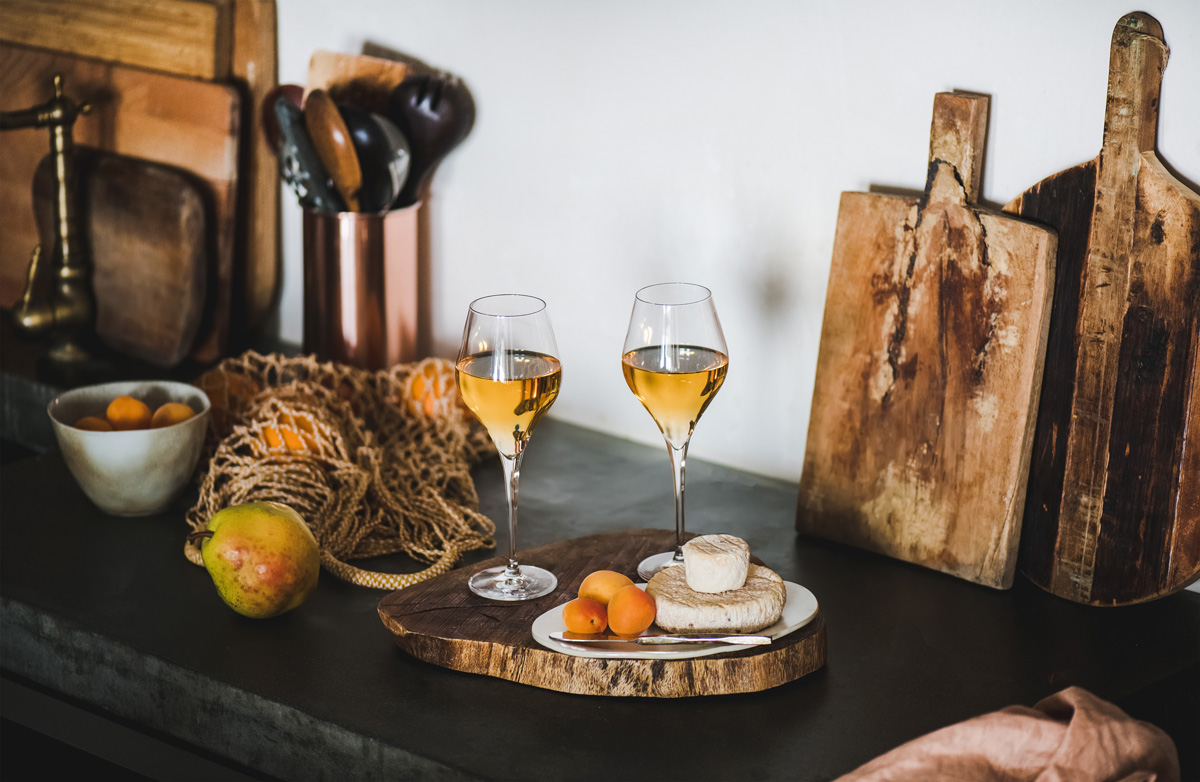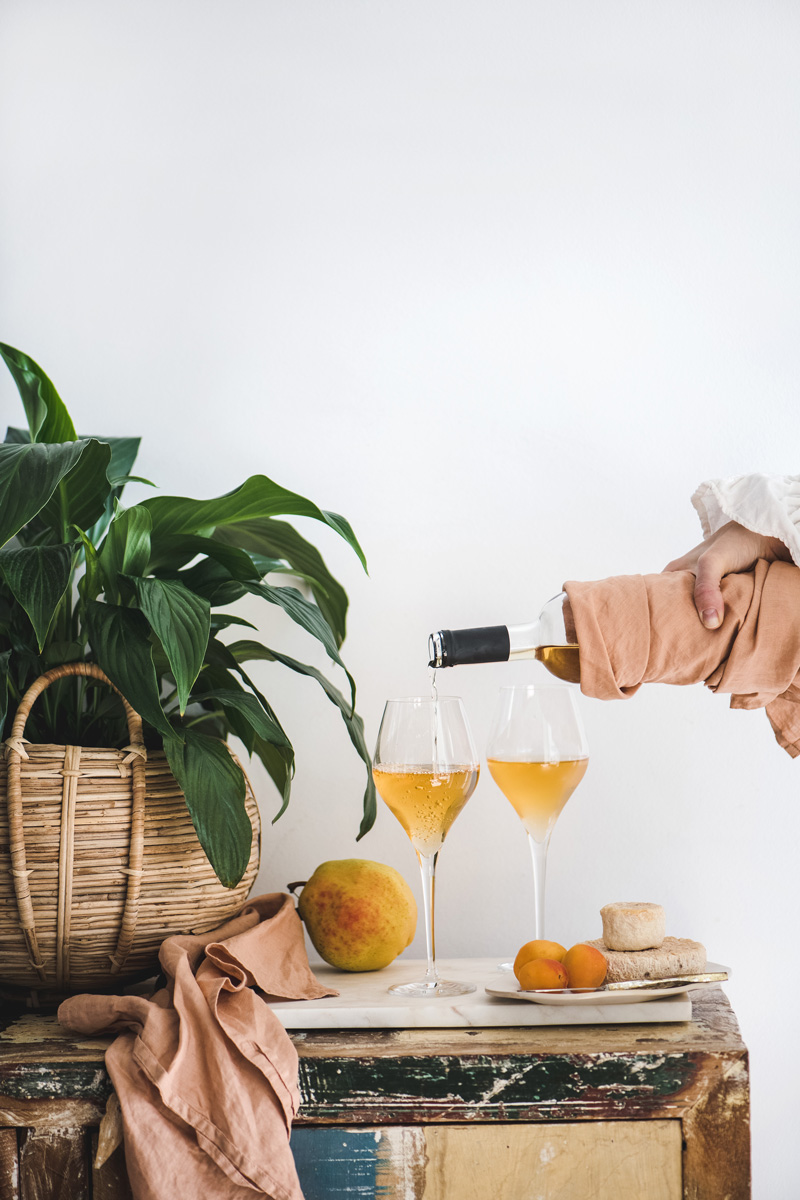
Wine Culture Magazine

With their interesting savoury notes, orange wines offer exciting new opportunities when it comes to pairing food and wine. Getty Images photo
What the heck is orange wine anyway? A few years ago, this would have been a common question among wine drinkers, but every vintage sees more and more bottles of these amber- and orange-hued wines lining store shelves.
Dismissed by some as a temporary hipster blip in the wine world, orange wines are practically as old as the beverage itself (think back 5,000 years to buried Qvevri in Georgia) and there is no reason why they shouldn’t stick around.
Defined simply, orange wines are just skin-contact whites, essentially white grapes made like you would typically make a red wine with the resultant orange-ish colour leached from the white grape skins. In fact, many people prefer just to use the term “skin-contact whites,” but for me orange fits more comfortably alongside the other colour categories—white, rosé and red.
Exactly when these wines disappeared from production is anyone’s guess, but if you go back beyond today’s fancy grape presses, filtration and other winemaking equipment, all wine was pretty much made the same way—crushed grapes left to ferment and often age with the skins, for both red and white varieties. At some point mid-last century, white and red wines cornered the market, with even the rosé movement being a fairly recent global phenomenon. Only really in Georgia, northeast Italy and across the border in Slovenia have these orange wines maintained significant production until the recent boom. Now, any restaurant or wine store that doesn’t have both an orange/skin-contact white section alongside the red, white and rosé could be seen as a little ancient and lagging behind the times.
Not everyone, though, is familiar with this new/old category. In fact, drinking orange wine requires an entirely different vocabulary than most consumers are used to. Not only are they orange in colour, but the skin contact also extracts what is often described as an orange-zest-like flavour. There will be a little tannin, as you would find in red wines, and commonly exotic tea leaf notes. They are savoury and textural, full of umami and new aromas and flavours that you might struggle to describe.

With their interesting savoury notes, orange wines offer exciting new opportunities when it comes to pairing food and wine. Getty Images photo
These skin-contact whites are also often closely intertwined with the natural wine movement as the category’s rebirth was driven by those who also practise low-intervention winemaking. This can result in sometimes cloudy wines with slightly oxidative notes that can appear a little alien to those who are used to quite sterile and clean white and red wines. A common response to a wine drinker’s first taste of an orange wine is something along the lines of “I don’t know how to describe it, but can I have some more?” There is something quite more-ish, textural and intriguing about these wines. They seem to be particularly finding a niche with younger wine drinkers who are less interested in high-scoring, high-priced, polished, lush red and white wines. Interesting is winning over familiar and predictable.
Orange wines are quite exciting in the food pairing realm, too, with their richer body, light tannins and often intense savoury, umami notes. These allow them to stand up to intense and weighty dishes that you would normally pair with red wines or match umami flavours that can make some wines taste dried out and bitter.
There are now more than two dozen wineries producing orange wine in British Columbia and these are made in a number of different styles. Just like the length of skin contact can vary in rosé and red wines, the same is true for orange wine. The two main schools of thought in making orange wine are: shorter skin contact of around two weeks or less to make sure not much tannin is extracted; or pretty much the opposite approach, long aging on the skins of three months or more to let the tannins fully resolve themselves. So, expect variation from producer to producer.
If you want to discover what the orange/skin-contact movement is about, come at it with an open mind, don’t compare it to white, rosé or red wines, and embrace this new and interesting category as something unique. It is here to stay.
Sperling Vineyards Organic Amber Pinot Gris 2020
(Okanagan Valley, $30)
Cloudy, tea leaves, dried flowers, golden apple.
CedarCreek Amphora Project Orange Wine 2020
(Okanagan Valley, $34.99)
Rose petals, orange zest, grippy and full.
Bartier Bros. Granite 2018
(Okanagan Valley, $25.99)
Turkish delight, racy, mineral and floral.

Rhys Pender is a Master of Wine who combines his time writing, judging, teaching, consulting and dirtying his boots at his four-acre vineyard and winery, Little Farm Winery, in the Similkameen Valley.

Rhys Pender is a Master of Wine who combines his time writing, judging, teaching, consulting and dirtying his boots at his four-acre vineyard and winery, Little Farm Winery, in the Similkameen Valley.
Copyright © 2025 - All Rights Reserved Vitis Magazine